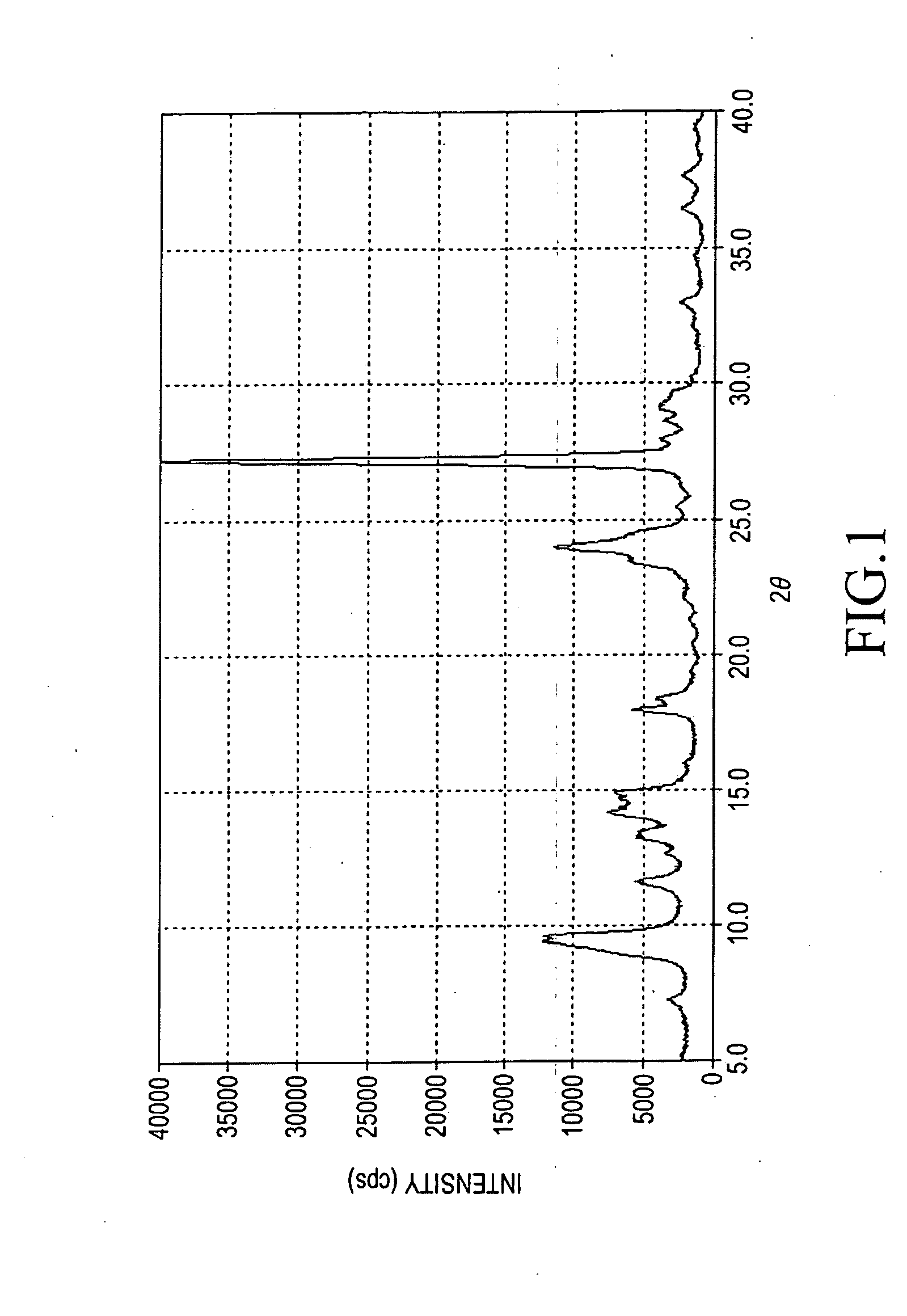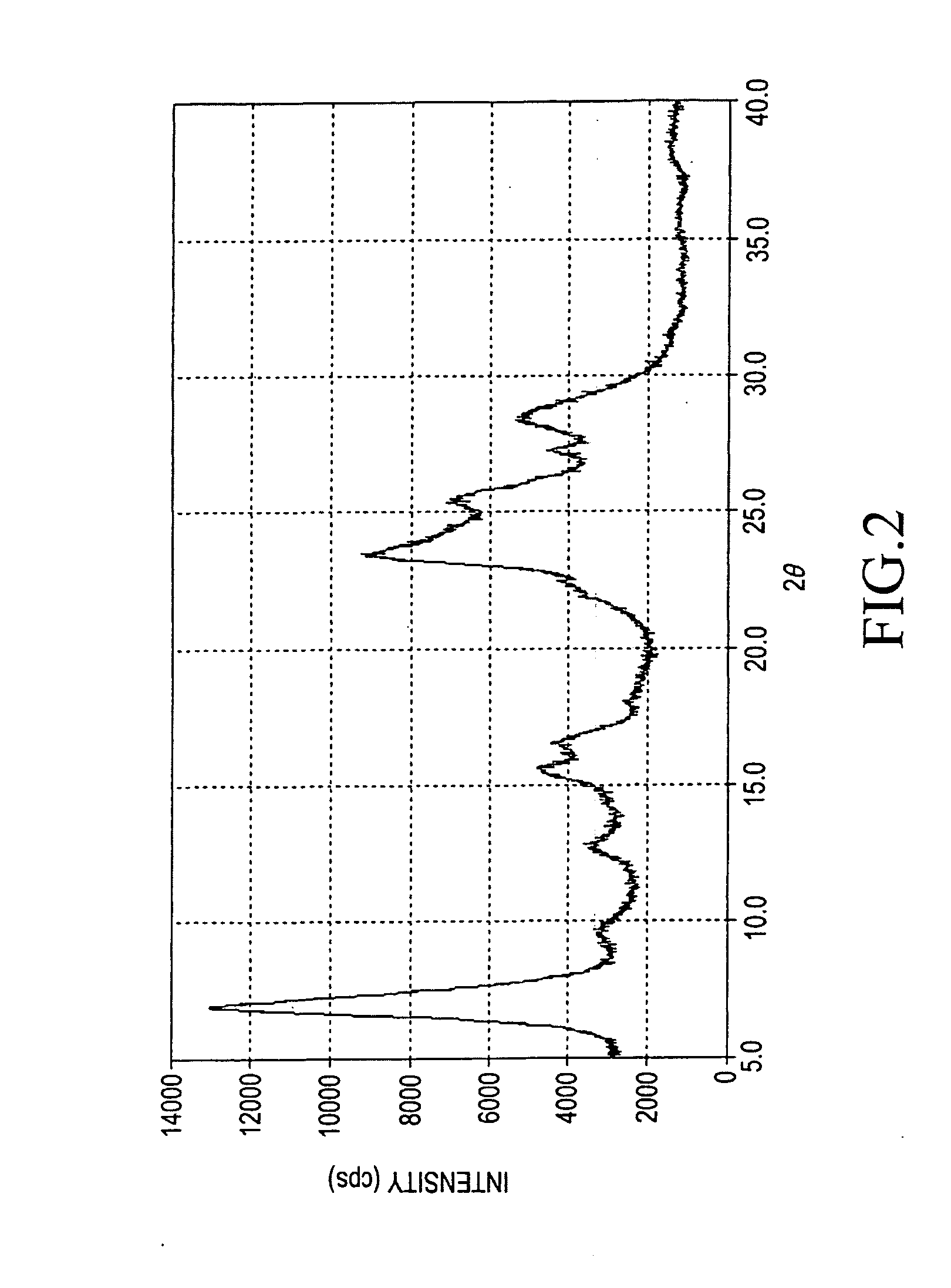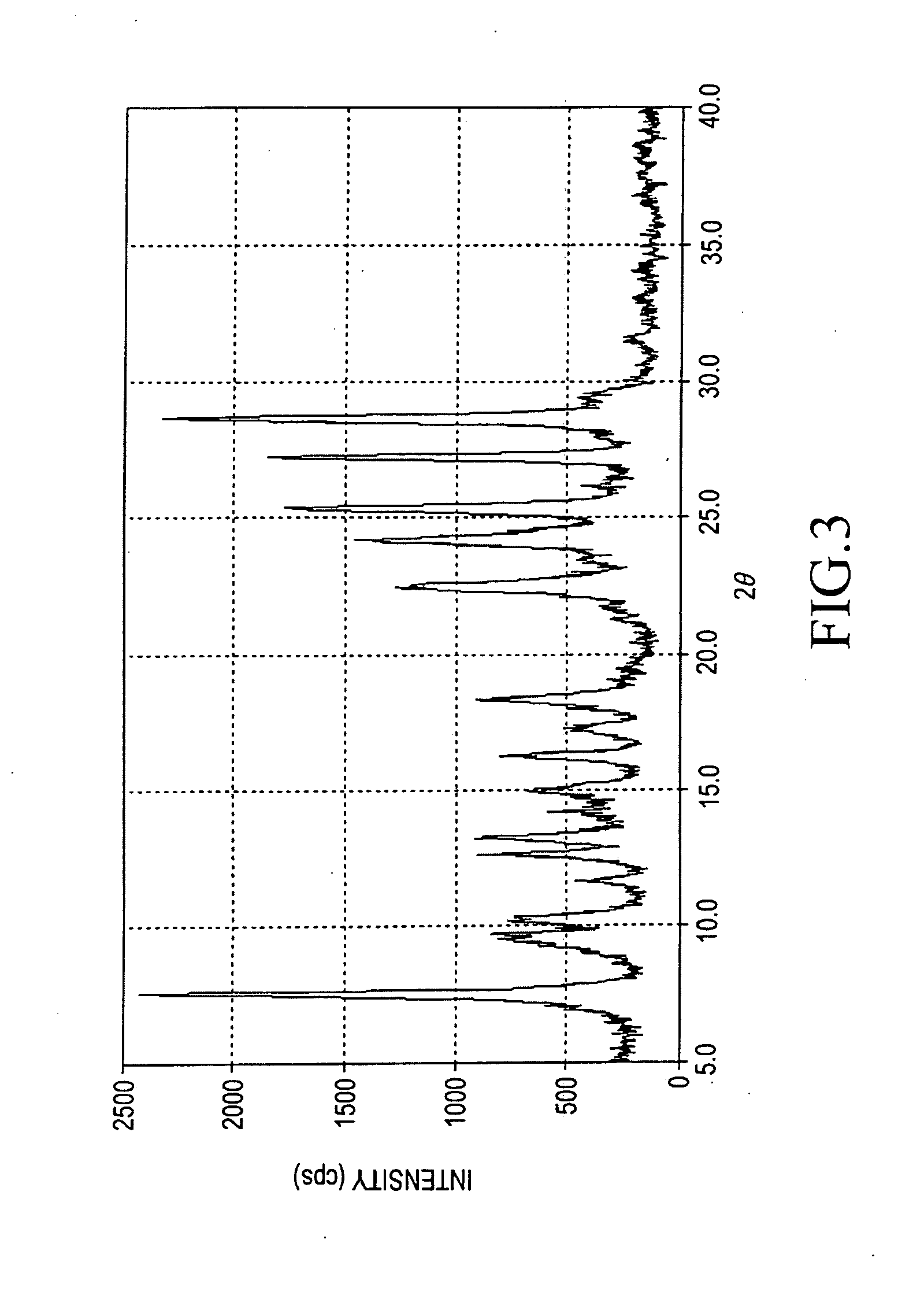Titanylphthalocyanine comprising specific polymorph and method for producing thereof, and electrophotographic photoreceptor comprising charge generating material thereof
a technology of titanylphthalocyanine and specific polymorph, which is applied in the direction of electrographic process, instruments, organic chemistry, etc., can solve the problems that conventional titanylphthalocyanines are not suitable for applying to charge generating materials, and achieve the effect of reducing dark decay rate, superior primary characteristics of photoreceptors, and high initial charging amoun
- Summary
- Abstract
- Description
- Claims
- Application Information
AI Technical Summary
Benefits of technology
Problems solved by technology
Method used
Image
Examples
example 1
Step (1-A): Preparation of α-Type Titanylphthalocvanine
[0101]100 g (0.780 mol) of o-phthalonitrile and 1 L of quinoline were charged into a 2 L separable flask. The mixture was stirred in a nitrogen atmosphere. 84.98 g (0.448 mol) of titanium tetrachloride was added to the mixture. Subsequently, the mixture was heated to 180° C. and stirred with heating at the same temperature for 6 hours. After the reaction was completed, the temperature in the system allowed to be decreased to 150° C., and then the reaction mixture was filtered with heating. Subsequently, 1 L of DMF heated (at 110° C.) was added to and washed the residue.
[0102]The resulting wet cake was added to 640 ml of DMF and dispersed at 130° C. for 2 hours. The dispersion was filtered with heating at 130° C. Subsequently, 1 L of DMF was added to and washed the residue. This routine procedure was repeated four times. Subsequently, 1 L of methanol was added to and washed the resulting residue. The resulting wet cake was dried ...
example 2
Step (2-A): Preparation of α-Type Titanylphthalocyanine
[0109]The similar procedures to those described in the above step (1-A) were conducted except that the charge amount was changed to 100 times that of the above step (1-A) to prepare the α-type titanylphthalocyanine.
Step (2-B): Acid Pasting Treatment
[0110]The similar procedures to those described in the above step (1-B) were conducted except that the charge amount was changed to 100 times that of the above step (1-B) to carry out the acid pasting treatment.
Step (2-C): Preparation of the Polymorph
[0111]502.5 g of the wet cake prepared in the above step (2-B), 2.5 L of ion-exchange water, 17.5 L of THF and 15.2 kg of 0.5 mm φ glass beads were charged into a 50 L enamel vessel. The mixture was dispersed at room temperature (25° C.) by using Traction Drive (small) (manufactured by Chuo Rika Co., Ltd.) and a propeller type stirring blade for 15 hours under the stirring conditions shown in the following Table 1. A sieving screen having...
example 3
Step (3-A): Preparation of α-Type Titanylphthalocyanine
[0112]The similar procedures to those described in the above step (2-A) were conducted to prepare the α-type titanylphthalocyanine.
Step (3-B): Acid Pasting Treatment
[0113]The similar procedures to those described in the above step (2-B) were conducted to carry out the acid pasting treatment.
Step (3-C): Preparation of the Polymorph
[0114]The similar procedures to those described in the above step (1-C) of Example 1 were conducted except that the charging amount was increased to 90 times that of the above step (1-C).
[0115]4.32 kg of the wet cake prepared in the above step (3-B), 9.8 L of ion-exchange water, 80.0 L of THF and 69.3 kg of 0.5 mm φ glass beads were charged into a 200 L SUS tank. The mixture was dispersed at room temperature (25° C.) by using Traction Drive (large) (manufactured by Satake Kagakukikai Kogyo Co., Ltd.) and a paddle type stirring blade for 18 hours under the stirring conditions shown in the following Table...
PUM
| Property | Measurement | Unit |
|---|---|---|
| Bragg angle | aaaaa | aaaaa |
| Bragg angle | aaaaa | aaaaa |
| Bragg angle | aaaaa | aaaaa |
Abstract
Description
Claims
Application Information
 Login to View More
Login to View More - R&D
- Intellectual Property
- Life Sciences
- Materials
- Tech Scout
- Unparalleled Data Quality
- Higher Quality Content
- 60% Fewer Hallucinations
Browse by: Latest US Patents, China's latest patents, Technical Efficacy Thesaurus, Application Domain, Technology Topic, Popular Technical Reports.
© 2025 PatSnap. All rights reserved.Legal|Privacy policy|Modern Slavery Act Transparency Statement|Sitemap|About US| Contact US: help@patsnap.com



